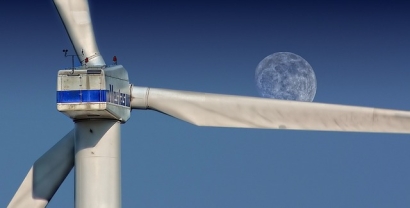
The Federal Survey Mitigation Strategy underscores the agencies’ shared commitment to the Biden-Harris Administration’s clean energy goals of responsibly advancing offshore wind energy production while protecting biodiversity and promoting ocean co-use.
NOAA Fisheries’ surveys are essential for sustainably managing our nation’s fisheries. For 150 years, the agency’s scientists have collected survey data that form the basis of the science-based management of America’s federal fisheries, support the protection and recovery of marine mammals and endangered and threatened species, and increase understanding and conservation of coastal and marine habitats and ecosystems for future generations.
“This joint strategy will help ensure the quality of NOAA’s fisheries surveys and data are maintained while the nation develops offshore wind energy,” said Janet Coit, assistant administrator for NOAA Fisheries, acting assistant secretary of commerce for oceans and atmosphere, and deputy NOAA administrator. “Our fisheries surveys allow NOAA to monitor important trends for individual species over time, with the broader goals of understanding marine ecosystems, particularly in the face of climate change, and supporting sustainable fisheries.”
“BOEM values our partnership with NOAA to proactively address key challenges as we work together to achieve the Administration’s ambitious offshore wind goals,” said Amanda Lefton, BOEM director. “We are committed to incorporating the best available science into our decision making processes as we continue to advance the Biden-Harris administration’s goal of deploying 30 gigawatts of offshore wind energy by 2030. By taking an all-of-government approach, we can leverage the expertise and resources of our federal partners to ensure responsible development of offshore wind energy.”
During the environmental review of the first offshore wind energy project on the U.S. Outer Continental Shelf, BOEM and NOAA Fisheries identified major adverse impacts on surveys conducted in the Northeast region. In response, a draft survey mitigation strategy was developed and made available for public comment earlier this year. Now finalized, the strategy identifies the essential components of mitigating the impacts of offshore wind energy development on the surveys.
The five goals of the strategy are:
The strategy—while focused on New England and the Mid-Atlantic—will serve as a model to address the impacts of offshore wind on NOAA Fisheries surveys in other regions. Nationally, NOAA Fisheries assesses the status of approximately 450 fishery stocks, 200 marine mammal stocks, and 165 threatened and endangered species (recognizing that some marine mammals are also endangered). These assessments rely on more than 50 long-term, standardized surveys, many of which have been ongoing for more than 30 years.
Offshore wind energy development plays an important role in U.S. efforts to combat the climate crisis and build a clean energy economy. The White House has set a goal of significantly increasing the nation’s offshore wind energy capacity to 30 gigawatts by 2030 and an additional 15 gigawatts of floating offshore wind technology by 2035.
BOEM is the lead federal agency responsible for leasing the U.S. Outer Continental Shelf for offshore energy development. NOAA Fisheries is responsible for stewardship of the nation’s living marine resources including fisheries, marine mammals, endangered and threatened species, and their habitats and ecosystems. Both agencies share responsibilities for resource management, research, public engagement, and other requirements related to promoting offshore wind energy development, protecting biodiversity, and promoting ocean co-use.

